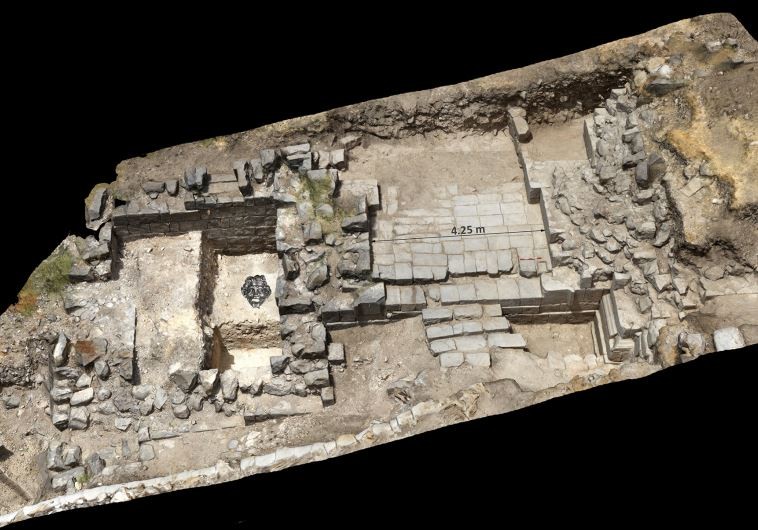Archaeologists from the Zinman Institute of the University of Haifa in Israel have discovered in the ancient city of Hippos the remains of a monumental Roman gate , which could be the entrance to a sanctuary of the Greek god Pan, traditionally represented as half man and half goat.
Already last year a bronze mask of the god had appeared in the area. , especially large compared to others dating from the same time, so the researchers were not very clear what its use would have been.
The recent discovery of the door may offer answers to this question, or at least be a starting point.

This Roman gate must have been, according to archaeologists, about 6 meters high, so the entire building must have been even higher. And as for the date of its construction, the first analyzes suggest that it would be from the time of Emperor Hadrian , between 117 and 138 AD
The site, which is outside the limits of the ancient city, would have been a shrine to Pan, and is located directly opposite the gateway to Hippos.
The site, also known by its Aramaic name Sussita (which also means horse ) is located on a hill above the Sea of Galilee, and between the 3rd and 6th centuries it was a flourishing Greco-Roman city that began to decline with the Muslim invasion and was definitively abandoned after the earthquake of 749 A.D.>

The city was also one of the ten Decapolis mentioned in the Bible, distributed along the Jordan River, in which the miracles of Jesus are located. However, all of them were culturally closer to Greece and Rome than to the surrounding Semitic culture.
According to Michael Eisenberg, director of the excavations, now the objective will be to determine what type of cults were carried out in the sanctuary. Normally the cult of Pan included ceremonies in which wine, animal sacrifices and ecstatic rituals, including sexual acts, were of great importance.
For this reason, they used to be carried out outside the city limits, as is the case with the remains found, or in caves and in the open air.
